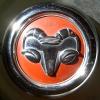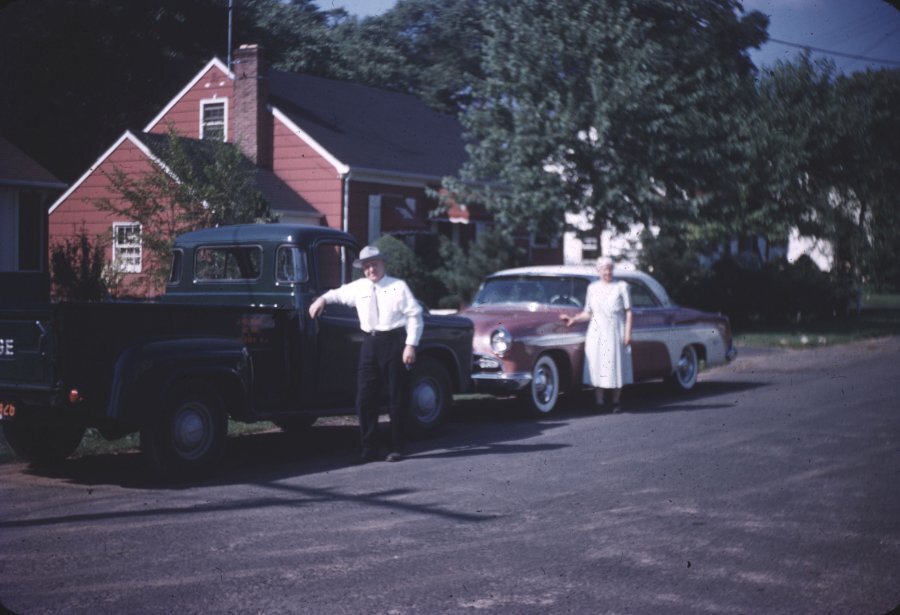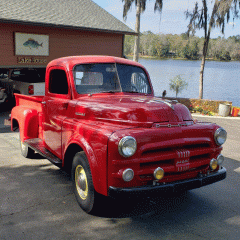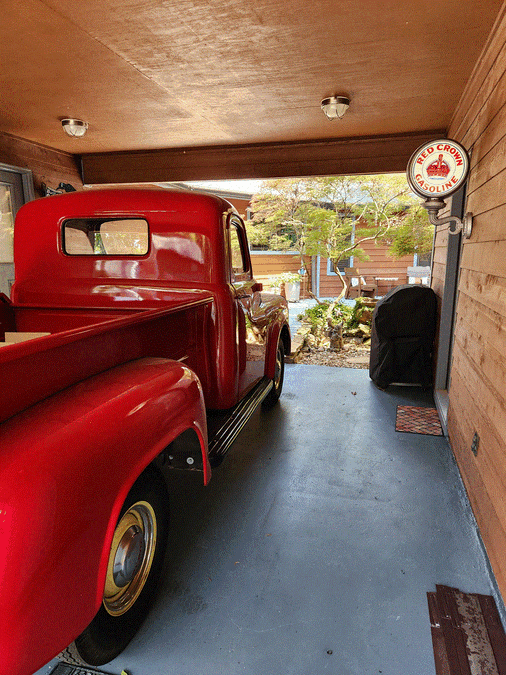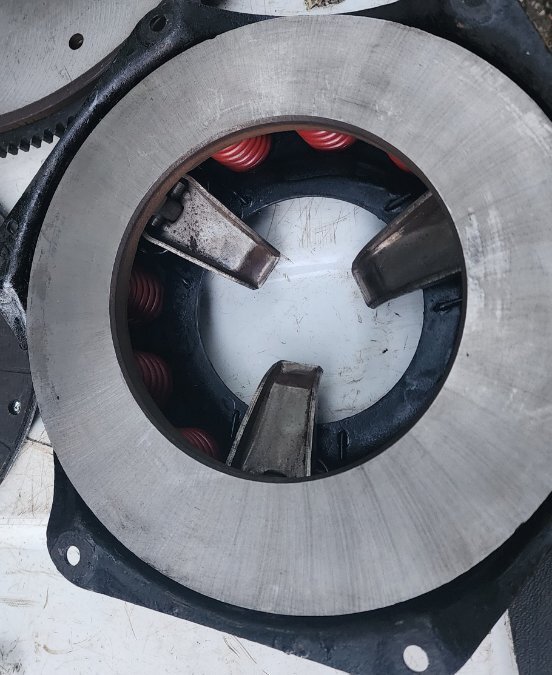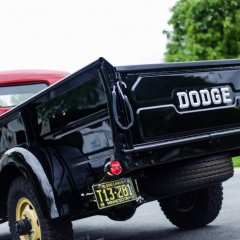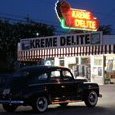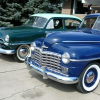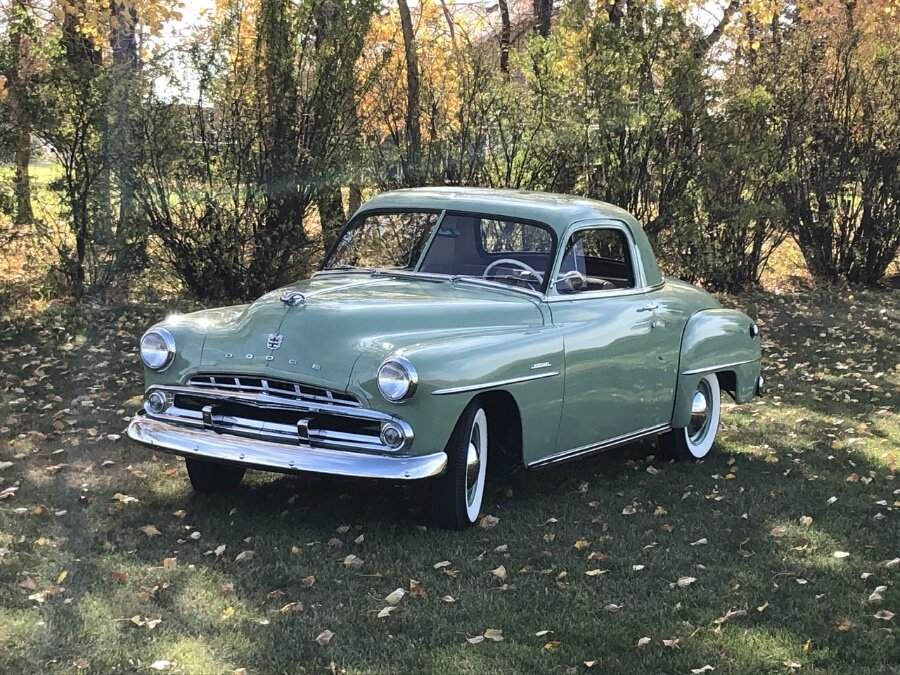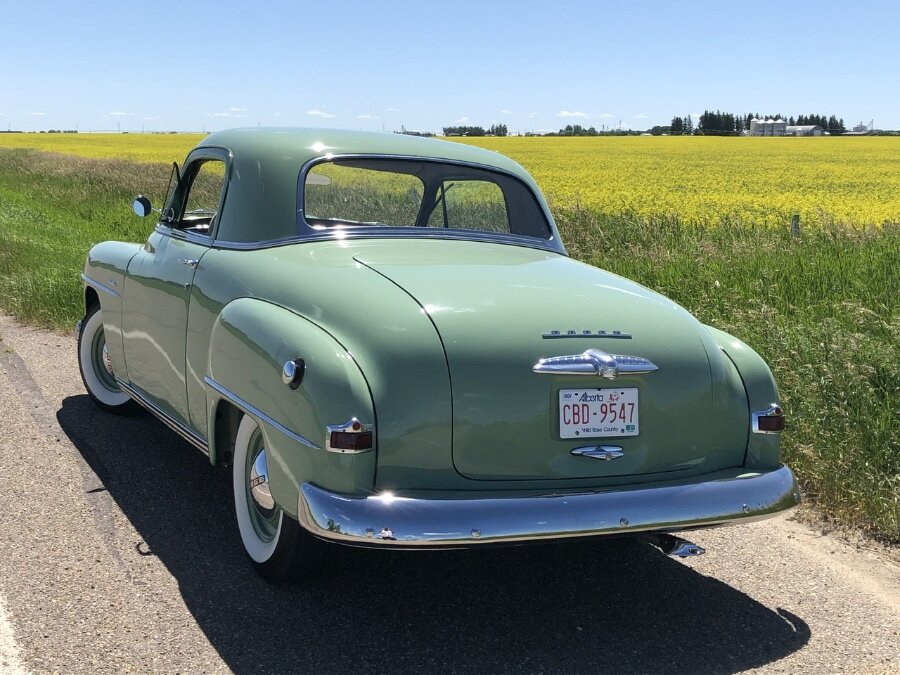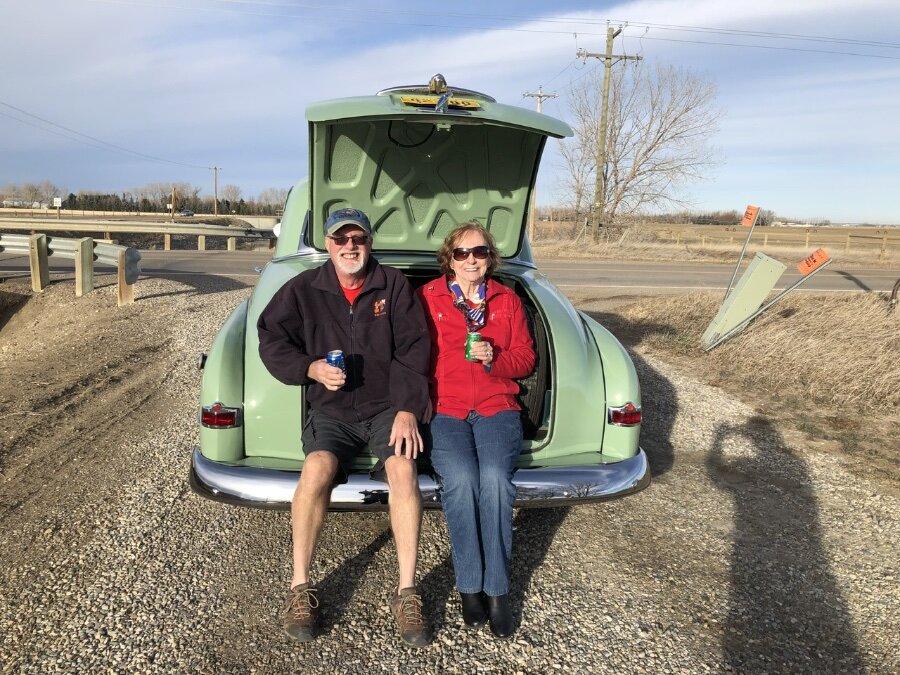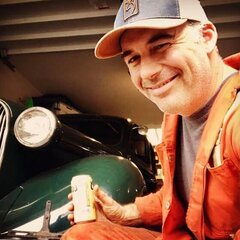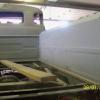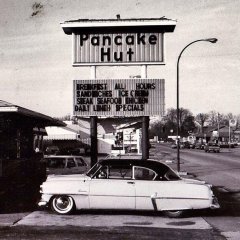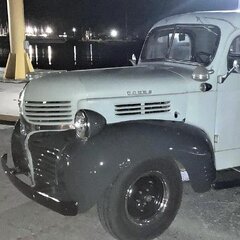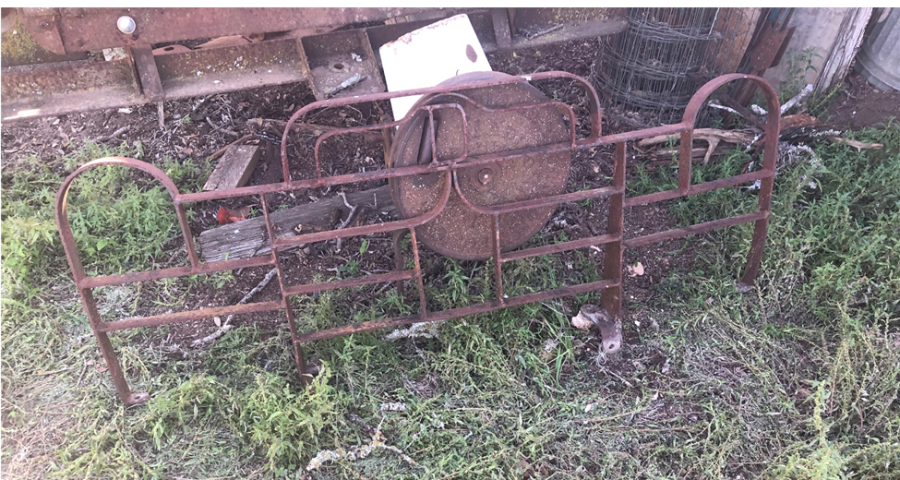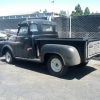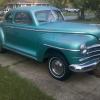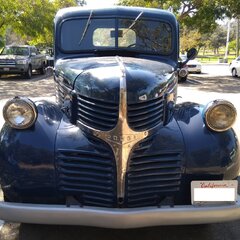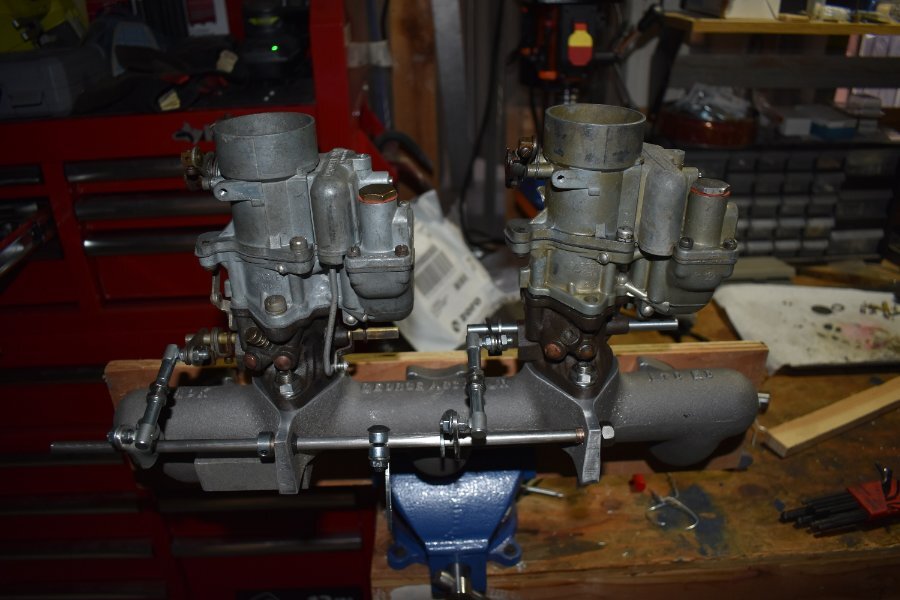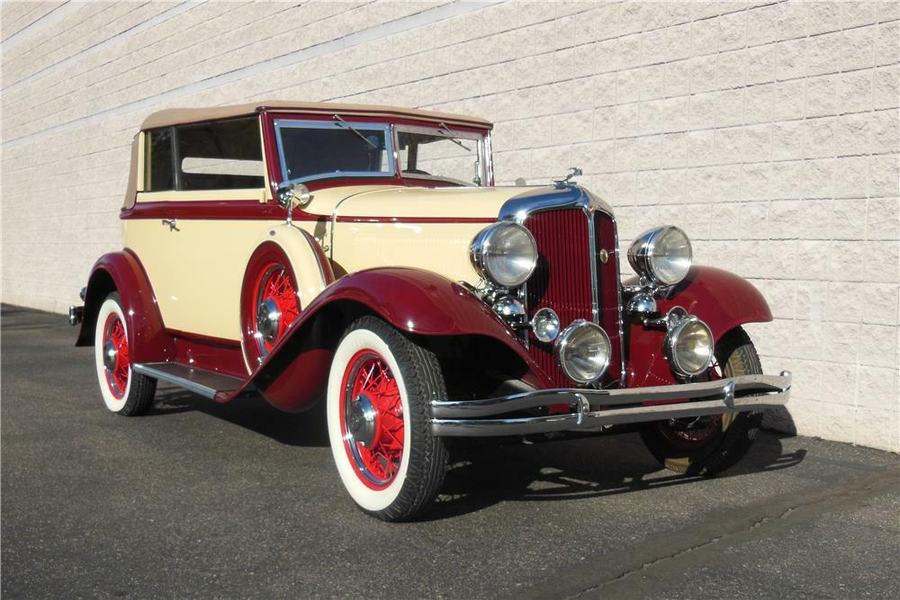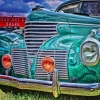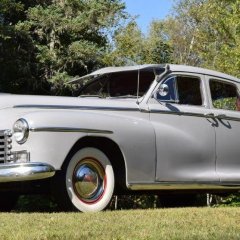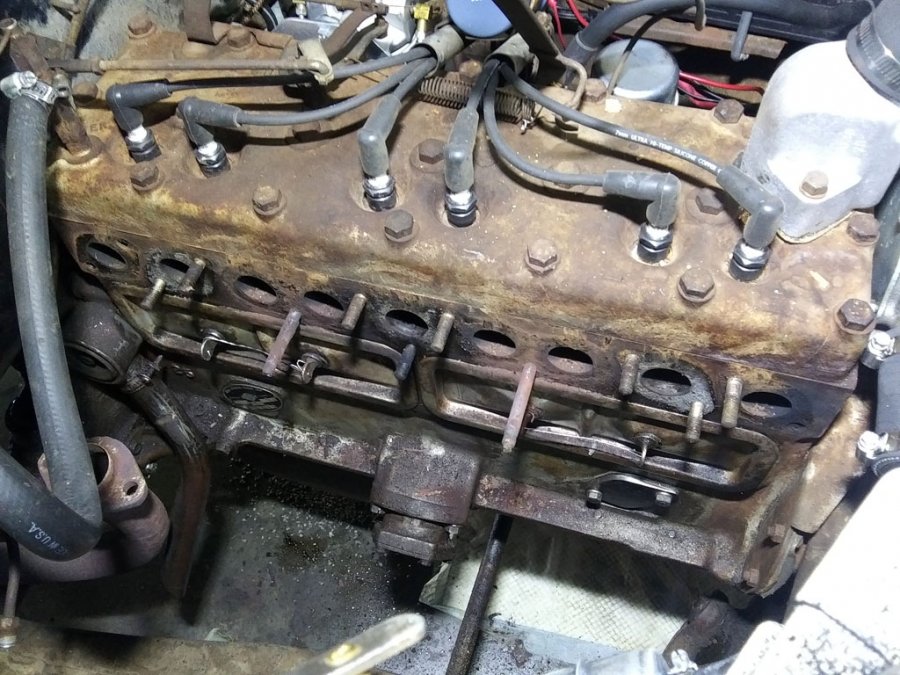Leaderboard
Popular Content
Showing content with the highest reputation since 04/12/2024 in all areas
-
My Great Grandfather, and guessing my Great Grandmother with the '55 Dodge (I'll be inheriting this summer) and what I believe is a '55 DeSoto. The truck was my Great Grandfather's then my Uncle's, and then my Parent's, and soon to be mine. My Dad just told me that he is getting too old to work on too many toys, and he is giving it to me. It is in a little worse shape than here, but pretty much original. I'll post pictures of it's current state, in the correct area, when I get it out of the barn, but from what I recall it definitely will need a gas tank and fuel pump, amongst other things.6 points
-
6 points
-
4 points
-
I have an admittedly tight focus on the KT Keller cars, so that's what I research and play with. It's all about having fun after all and those are the ones I like. I am a huge fan of Overdrive transmissions because they don't really change the charm of the cars and actually add to it. When you put one in your car your speedo will be off at all speeds because the speedometer pinion gear was selected for a 4.1 ring and pinion. The good news is you can swap out the pinion from your old three speed to the O.D. and all will be back to normal ( assuming your speedometer doesn't need service ). But what if you changed the rear end ratio or the tire size? I don't advocate changing rear axles because I don't see much to be gained there. You can easily change the differential carrier ( aka 3rd member ) in a Plymouth if you want another ratio. Where I live there's lots of open road with highway speeds of 55 to 70 so optional ratios, tires and O.D. go well with my Plymouth. My P17 Coupe came with 6.40-15 tires ( modern equivalent 195/75/15 ) and a 3.73 final drive ratio so the speedometer pinion would be a 17 tooth gear ( p/n 652-848 ) for an example. Chrysler designed the pinions to use the same 6 tooth gear on the output shaft so you only need to change one gear to correct the speedometer. One thing you find out right away is selecting speedo gears is not an exact science. You can get close and you might hit it right on the button but you more likely will be over or under by 2 or 3 mph. That's why the Highway Patrol has an enforcement tolerance. So let's look at tires first 6.40 15 = 195/75/15 standard tire for a P17 6.70 15 = 205/75/15 standard tire for a P18 7.60 15 = 225/75/15 an optional size tire Final drive ratios 3.90 very common on long wheelbase cars 3.73 standard ratio on many optional on all 3.54 optional Chart of ratios & tires vs speedometer pinions 3.90 6.70 15 17 tooth pinion 3.73 6.40 15 17 tooth pinion 3.73 6.70 15 16 tooth pinion 3.54 6.70 15 16 tooth pinion All 7.60 15 16 tooth pinion So you can see you're not going to get an exact reading but you can get close enough to avoid a ticket. The part number for the 16 tooth pinion is 652-846. I have found that if you have the number for an obscure part the parts house will look to find it in their inventory but they are likely to blow you off if you just say "I need a 16 tooth speedometer gear." Happy hunting!3 points
-
Yup, between 65 and 70. When I had earplugs in, I tended to go faster, haha....3 points
-
with all due respect, items needed to exact this repair is common at any hardware store or big box building supply, TSC etc that one can walk in, get the item, pay and immediately got to work repairing. While mail order from many companies and sites are MOST BENEFICAL when you dealing/needing bulk quantity, I have to state IN MY OPINION this is not the best option for this particular thread. Heck if it boils right down to it, one can find where a person may park a chevy/gm product and find where these have fallen off and free for picking up. Ok so the last part is a joke...maybe real at times, but still intended as a jab/joke.2 points
-
SURVIVOR: saw this Dodge between Lake Graham and Newcastle2 points
-
Likely not a "factory" accesory, more likely a mass produced catalog or dealer option, these aren't listed in the Accesories section of the manuals.2 points
-
Just use a torch to get the plug red hot....that oughta bust the rust loose................. 😲 🤣2 points
-
John-T-53, thanks for all the pictures. I’m sure a lot of us would like to make the tailgate and BBQ. Just not practical for most. However, your pictures really let those of us who can’t make it live vicariously through your pictures. The most and best of the bunch! I would love to bring this old girl to the BBQ but it involves border crossing (not a problem with a passport) and a three, four, or possibly five day drive depending on weather and lack of problems. It doesn’t have a tailgate but does have the next best thing…..a big butt trunk.2 points
-
you may be onto something Sniper, I am going to say a rolling wheel gathers no red paint.....2 points
-
See now a song comes to mind I see a black wheel and I want to paint it red Apologies to The Rolling Stones2 points
-
I use the in my opinion a lot because most of my unsolicited comments are just that, an opinion and in no manner saying good bad or indifferent....but just as I see it. The fact I will then state the whys and wherefores of my opinion is to say that it is not just a whim or silly notion and give some background, color and size ratio etc...technically I could care less one way or the other what anyone chooses to do as it is not my car no more than if a person likes or dislikes what I do with mine. Big hobby folks, I will admit at one time it would rankle me see what some folks may do...but hard lesson to learn is JUST NOT MY BUSINESS....the red wheels, there is NO WAIVER here......lol2 points
-
•pinched tube on intake manifold appears to be the vacuum source for the vacuum windshield wiper motor •intake manifold appears to have a partial PCV setup •spark plug wires appear a little on the long side...universal sets with 90° boots can be sourced2 points
-
I dunno, call me a snob but I's rather spend my tool money on real quality tools. Like Starret or Mitutoyo. Yeah, they cost a bit more but are definitely quality tools.2 points
-
Another vote for making your own. It’s like a puzzle to solve. You screw a few up. You learn. You get better. Building and shaping your first ever 3 ft line across the left rear axle housing? Order two 25 ft rolls of 3/16” brake line tube. 😄1 point
-
preformed and then curve and bent to fit a box for shipping, you better off making your own tailor fit set.......1 point
-
That is a very reasonable answer. I have some smallblock dodge ARP rod bolts and just like the pontiac bolts, they also will not go into the 218 holes. I would appreciate your efforts in measuring your flathead rod bolts to compare numbers when you get the time. Thank you and anyone else who has early flathead dodge rods available to measure the rod bolts. This seems like a plausible answer. WELL AS A MATTER OF FACT: You are the man of the hour. I just went out to the garage with my nut/bolt gauge and also a 3/8-24 standard bolt with nut and amazingly so, they fit the Dodge rod hole, rod bolt, and nut exactly. Additionally, the pontiac and ARP bolt will not thread onto the nut/bolt gauge or the 3/8-24 bolt and nut. We have a winner!! Sorry, no chicken dinner. But many thanks for the solution. I never would have thought in that direction. Now it's a matter of if the rod and cap will take a reaming without interfering with the bearing. Thanks again for all the responses and especially the solution. It does seem odd that in all the builds online, no one mentions this. Thanks again all. dan...1 point
-
My 93 F250 rear shock upper mounts sit about 2 " inboard and below the frame rail. To install these on my truck would require mounting them on the inside of the C shaped frame, open side of the frame is on the inside so I would guess the standout to the shock stud to be about 4 inches. you'll have to wait till it stops raining and dries up a bit if you need more accurate measurements.1 point
-
I would check how far away they move the shock from the frame. i do like that mounting surface. I been thinking about my 1948 Desoto.1 point
-
The engine pictures are current, but it's not done under the hood. Planning on using a fuel block and hard lines. I set that up before I was able to find the right fittings to use on the hard lines. The filter is in a temporary position. As an update, I have been able to put some of the stainless on the strips that are on the glass. Slow going and hard on the hands.1 point
-
Here's a possibility. I wonder if the Dodge rod bolts have threads that are cut, while the Pontiac rod bolts have rolled threads. Rolled threads are formed by dies that displace (smash) the material into the shape of threads, without removing any material. This results in threads that have larger outside diameter than the adjacent shank section of the bolt. On the other hand, cut threads are just that - they are made by cutting material away to achieve the thread shape, so the threaded section diameter will not be any larger than the diameter of the adjacent shank. It's kind of hard to tell from your photo, but it looks like that might be the situation. If so, then accordingly, the Dodge rod might be made with smaller bolt holes to snugly fit its cut-thread bolts, but the Pontiac bolts, with their rolled threads are too large to fit. I have a couple of Dodge 230 flathead rods at home, along with their bolts, and I can tell you that the threads in those bolts have the appearance of being cut, which surprised me, since I have seen other Dodge flatheads that have the appearance of having rolled threads. I have no reason to think that those are not the original bolts, and perhaps they were early rods that used cut-thread bolts. I could take some measurements and photos of those rods and bolts some time in the next few days and we can see if they match the dimensions of your bolts. We can also see how thin my other rods are (the ones that used rolled-thread bolts) in the wall between the bolt holes and the bearing saddles. I remember them being pretty thin. We might find that you have room to ream out the bolt holes in your rods to accommodate the slightly larger Pontiac bolts, or some aftermarket bolts, such as those from ARP. From the strength and durability (fatigue) standpoint, the bolts containing rolled threads are very much preferred. I believe virtually every manufacturer uses those types of rod bolts nowadays and have for many, many decades. I remember seeing early rod bolts from other engine makes that used cut-thread bolts, but I think most everyone moved away from that type of design long ago.1 point
-
The drag links I'm familiar with had one end with cotter pin and slot cut into the end that a wide screwdriver blade or drag link socket fit into for adjusting and the other end would be a tie rod style. If the end that has play is similar to the tie rod style Sniper put up, replacement is your needed. If the other style, I believe some replacement sockets and cup, spring may be available. Post a pic of the bad end if you can.1 point
-
Never saw the points firing a plug when turning the key 🙄 Is this a stock setup, besides the ignition? Are you running an electric fuel pump or any other things connected to the ignition switch?1 point
-
Last year redid the wood bed of my truck. Some of the carriage bolts and nuts I was able to reuse by just a quick brush and repainted them (the heads only) with the POR15 Black Glossy Paint. I used it on my bed strips as well and all these parts were steel. I looked online for hardware, E-bay, Ace, Grainger to name a few after taking inventory on what I needed that was not salvageable for hardware. I found the best prices for what I needed at Menards online. Based on prices everywhere I decided to go with hot zinc dipped hardware and added the sizes for carriage bolts, washers and nuts to my online cart. Menards will pull your order and have it waiting for you at the pick-up counter but they charge extra for that, so I printed my online cart list and went down and grabbed them myself.1 point
-
By turning the ignition on and then off you did the same thing the points do when opening and closing, letting the coil fire a plug, and if a gas mixture is in that cylinder when it fires it'll rock the engine. That's my guess.1 point
-
For the speedo pinion seal, I found a Honda #91204-HB3-004, is a perfect fit.1 point
-
Pro tip. If you have a bunch of transmissions and go hunting through them for the proper gear to match the 3.73 you swapped into your coupe make sure you reinstall all the wrong ones correctly. Otherwise later on when Dad goes to install one of those in place of the OD he's not selling with the 50 Plymouth bad things will happen to the new owner. Like the tail housing exploding....1 point
-
Sorry. I have a very old relative who is also into telling "stories" most of which never happened and are obviously so absurd to be even remotely plausible. I try to nod and let most things pass by, for the 101st time I am hearing it, but after a certain while I still tend to get irritated when the level of shenanigans reaches a certain limit 😆 Is that a factory accessory or a DIY? 🤔1 point
-
1 point
-
HEET is 99% iso-propyl alcohol and would most likely be useful only if using non-ethanol gasoline. If the tank has ethanol-laced gasoline in it, the ethanol is already absorbing moisture that is in the gas (that is why ethanol-contaminated gasoline is nasty stuff....corrosion city). The amount of ethanol in a few gallons of E10 is far more per volume than what is in the red plastic bottle. It does work well with gas-fired camp stoves, however. Update: Since last fall my TR6 has been stored in a temporary enclosed garage (Harbor Fright) and this spring it has presented a couple of yips which I have wondered might be due to water condensing in the tank because of the outdoor storage. Los Control got me thinking about this, so why not. I added the appropriate ratio of HEET to the tank just in case there was still some moisture in the tank. Yep, a sniff test confirmed HEET is good ol' alcohol (no taste test...). I figured it wouldn't hurt anything to add it since the tank already has E10 in it.1 point
-
My point was that O.D. cars had final drive ratios in the neighborhood of 4.10 ( some places say 4.30 ) and the speedometer pinion that went with it. Thus no matter what gear you were in the speedometer would read incorrectly. Which is true even if that line was unnecessary ( my bad ). All transmissions that have speedometer gears measure the driveshaft rotation speed. Some exceptions are for example VW Beatles measure left front wheel speed and SAAB 99/900 which have the gear on the differential. You can buy speedometers that measure GPS signals and the are dead on with no connection to the wheels or driveshaft but they are really pricey. What I was trying to get across was that you can correct your speedometer reading with an easy swap of the speedometer pinion gear. If you want an O.D. transmission ( R10 G1 ) you can change the speedo pinion with the one in your old transmission. However if you swap differential carriers to get the ratio you want, you need to score the speedo pinion from that car. There is an exception here in that the 3.54 ratio is usually in an automatic transmission car and that speedometer pinion is not the same design as the manual transmission. Slight changes in tire size can get you closer as well.1 point
-
1 point
-
That number doesn't come up in my 51 Mopar parts book so it looks like your 49-50 only is right. I just inherited a bunch of Dads books I'll see if he has a 50 Plymouth parts book1 point
-
WINNER WINNER CHICKEN DINNER Thanks for tip Los. I pulled the sender and measured the gas level, it was at 2 1/2" in an 8" deep tank, which matches the fuel gage reading of about 1/4 tank of gas. Looking in the tank from the sender hole I couldn't see any water, but it was probably back by the tank drain, and the drain plug is stuck and I can't remove it. The one thing I didn't do last fill up was to put Stabil in the tank. It keeps the gas good and also helps with condensate. When I measured the gas level, I stirred the gas in the tank then I smelled the gas. It didn't smell bad, but it smelled weak. The strong smell wasn't there. It smelled lite, like half of the normal gas smell. I have new fuel filters on the way to replace the one before the prime pump at the tank and the one before the carb and when I change them, I'll take another crack at removing the drain plug and hopefully know for sure about the water in the tank. So tune in next week for another exciting episode of "As the Wheel Turns". Joe Lee1 point
-
When I stopped developing my AoK clone intake, it wasn't because I thought it was a bad idea. In fact I also stopped working on an adapter plate for the 833 transmission. I did that because I found out from Tim Kingsbury, that George Asche might have some plates still available. He did, so I bought one. He actually did a new run of them so I got one that was just finished. In talking with Robert, one of his sons, about the plate I tossed out a question I thought I knew the answer to...were there any AoK intakes still available? I was shocked when he told me they might have one I could buy. I sent them a check the very next day In all it's glory, here is where I am with it. I'm just getting started mocking up the linkage. George will do that for you, and it would most likely be better. I'm using my Carter WA-1's though and George prefers the B&B. Besides the fact that I like to do my own tinkering. I drilled the tabs for the linkage rod a bit over and epoxied 5/16 oilite bronze bushing in place. I used the rod as a jig to get them in the right alignment, using my digital angle finder and some wire to pull the rods until is was as close to perfect as I can get it. I still need to add a threaded hole to locate the bell crank, which I'll take off my stock manifold. The right carb is just lightly bolted back together for the photo. I am taking it into work tomorrow to use one of our mills to drill for the custom bushings I'm making for the throttle shaft. The machine shop manager (We are an electronics company in simple terms) is helping me plan. I'm going to redo the bushings from some oilite bronze they have at .375 dia. I don't think the cast iron base has the wall thickness to go that far, so we will take a look and go with something that has more like a .020 wall thickness. We make cryogenic equipment (physics instruments) primarily, although I work on our SEM/AFM fusionscope project team. Anyway, I have liquid nitrogen I can use to freeze the bushings and after we heat the cast iron the plan is to have about a .0005 interference fit. Pretty tight sounding, but our guy's do tighter than that. I'll hone the bushings to size from my initial .3105 reamer. Should be fun. You never find cool things, if you don't ask. I don't know if there are any more intakes available or not. The truth is, if you don't have to pay for anything but the raw materials (machine yourself, welding is free) you can do a pretty good job of imitation using the design I started. But it won't have George Asche Jr's name on it. Miles of smiles here.1 point
-
I used rust cure formula 3000 on the inside of the car, once I was refreshing the interior. Apparently, there were some studies performed by Canadian DOT, or something like that, indicating that liquid rust proofing really works if applied frequently. Some of our Canadian members might know better. I am planning to use it on the outside, as well, but just did not get around to it, yet. However, I would not be able to test it since the car is not driven in adverse weather conditions. Thus far, the only thing I can say is that it really does not drip and spreads very well1 point
-
1 point
-
For several years I was hounded about getting a dog. Pun intended. Didn't want to do it. Not because I don't like dogs but because I do like dogs. I get too attached. I finally relented and on a Saturday morning and we took off on a two hour ride - one way - to pick up a basset hound puppy. That was eight years ago. Daisy is my buddy now. She hurt her back a few days ago and it was after hours. And the vet we usually use was going to be out of town for the Easter weekend and wouldn't be back until Monday. So I found an alternate local vet and took her in yesterday. OK I'm almost to the point of this post. I expected it to be a thousand dollars when I went back to pick her up. But I'll pay that - I don't skimp on medical stuff when it comes to people or pets. That's just one of the things that has to be done. BUT the bill was only 500 dollars - still not cheep. Now being of the old car mind set that means that I have 500 dollars left over to get some parts for the 47 P15. Not sure I'll get away with that😂 PS: I expected spinal problems in an old dog. But turns out it's only a pulled muscle. Really good news.1 point
-
this is in line to big aux lights go better with big standard lamps.....you have the opportunity to make a fellow hobbyist happy, line your pockets and do your car justice at the same time...but again...just my opinion.....this guy needs to lose the whore red wheels and go with body color either primary or secondary color will look better than this stark red.....again my opinion.....nothing says you cannot paint a car ugly....lol1 point
-
Dan: Sealed beam headlights were first introduced in 1940 and mandated by the Govt. There were a few exception that still used bulbs. For MoPar from 1940-48 the cars and truck all used the 4030 Sealed beam bulb that did not have the aiming tips. From 1949-56 still 6 volt they used the Autolite Bullseye bulb and still no aiming tip. In 1956 the 6v 6006 sealed beam was first produced and these had the aiming tips so that the BEAR headlight machine could be used to adjust the light instead of aiming the lights against a wall and manually adjusting the light. More of a true system to get everyone's lights in sync. The 6006 6v bulb is now used as the primary headlight bulb for cars and truck from 1940 to around 1956 for cars that had 6volt system.s Rich Hartung1 point
-
@keithb7 Sounds good. I'll get that micrometer and wait for a good day weather-wise to do it.1 point
-
The factory front plate mount for our D24 is similar to what Eneto-55 shows. It clamps onto the front of the bumper via one of the bumper bolts. Which just happens to be in the center of the bumper. For consideration, Maine requires two license plates, too, but allows for the use year-of-manufacture plates for antique cars. Maine only issued one license plate in 1948, so it is legal for us to display only the rear 1948 plate. The car does have to be registered as an antique, though. Might that work in Idaho?1 point
-
That pipe could be for wipers or other vacuum operated equipment? To determine what is and what's not original, it is best to find some vintage illustrations, such as from the owners' or repair manuals. Here are some of the things I see on the pictures: bed is likely not original or modified, rear view mirrors do not look period correct. Obvious - turn signals, side markers, etc. Interior appears to have been redone. Under the hood: is that a DIY PCV setup? You might want to check the original fuel bowl next to the pump, it needs to be cleaner. The heater outlet has been welded shut I see the vacuum advance next to the ignition distributor but do not see a vacuum line going to it, is it still there? Also, is this engine original to the truck (does the number match the frame)? The red color seems a bit unusual. Also, either your brake or clutch pedal is out of alignment, they should be the same height.1 point
-
Hmm, looking at Andy's post I see something that might work Yeah, it's listed as a fog light bracket, but it looks like it would clamp to those bumper brackets and a piece of angle iron bolted to the top would let you mount a plate? No, I wasn't looking for anything like this, I was looking for add on fog lights, lol.1 point
-
Thanks sniper and DJK for digging up info. And here's my two cents about electric pumps. First off, I love 'em! And here's why: When one of my vehicles has been sitting for a long time, I don't have to waste precious battery capacity cranking the motor to get fuel up to and in the carb. I also put a electric switch in the supply line to the pump so that, in Autumn when I'm putting cars to sleep, I can turn off the switch and keep running the motor until it dies. This does a good job of draining the carb, reducing varnish build-up. Yes, I could use a gas additive (and I often do), but with lots of cars and equipment, and full gas tanks in each, that's lots of Stabil! And, in regards to leaving the mechanical pump in the line, I've done that numerous times, but one thing to consider is this: if you do that and the rubber diaphram of the mechanical pump fails, you'll get raw gas going into your crankcase and diluting your oil... and not know it!1 point
-
The decline of the Champion Spark Plug and the death of a company. The Champion electrode was made from mainly tungsten powder at a company called Fansteel in North Chicago. They mixed, pressed, sintered, burnished and then brazed it to the copper sparkplug core before shipping them out to Champion for assembly. The company also made many other items like the Lynx golf club casting, High end tungsten darts (Black Widows & Diamond Backs) as well as supporting WW1 & WW2 military needs, they downsized in the late 80s and were dismantled early in the 90s along with VR Wesson a sister company that made carbide cutting tools. Fansteel Inc.docx1 point
-
Champion spark plugs...ran them for years in everything from V8s to single cylinder lawn and garden equipment...then in the late 90s, they needed to be replaced more often from electrode wear, and by the mid aughts they were blowing apart in the small engines, larger engines were fouling and hard to start in cold weather. Switched to AC Delco on big engines and NGK in small and haven't had a lick of trouble since.1 point
-
I looked at the license plate mount this afternoon, and tried to get the old plate off to be able to get a decent picture. It isn't quite as I remembered. The center (vertical) bracket hooks under the bumper, and the center bumper bolt passes through it, securing it to the bumper. Then there is a horizontal c channel bracket fixed to it (welded?), with long slots, to accommodate various mounting points for the different shapes of license tags used during that era. This is the best I could do, as the tag mounting bolts are rusted fast, and just turn on the back side. (I could have broken the tag off, but didn't want to ruin such a perfect license plate.... )1 point
-
1 point


